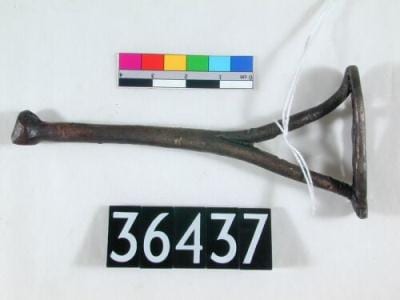The emergence of Empathy
By Edmund Connolly, on 21 August 2012
“We must learn to regard people less in the light of what they do or omit to do, and more in the light of what they suffer.”
Bonhoeffer
Although I may be hedging my bets by opening my first ever blog post with a quotation, I consider it suitably apt for the topic of creating empathy within the museum space. I recently met Roman Krznaric (founder of the School of Life) who has created the Museum of Empathy model, a space which, rather than just educating its visitors, encourages them to empathise with the denoted culture. This may be a case of understanding the labour and wage paid to go into the cup of coffee you drink, to facing the cruelties of enduring a hurricane.
I must admit, at first I was not entirely sold on the idea, I failed to see why a museum needed to impose empathy on its visitors. Empathy is a very intimate, personal reaction, for a third party to dictate to me that I should be feeling empathy at a certain point in time jars painfully with all my British stiff upperlip-ness. For me, museums are places of education, beauty and self discovery, but it is precisely for these reasons that empathy is rendered so important a facet of the museum culture. Museums have become the medium of choice to discuss contemporary, community and even future issues that relate directly to the viewing public. They are no longer silent halls where times new roman boards dictate the meaning, dating or interpretation of objects; Museums are alive, changing and inspiring thought, but can they help one to empathise with the civilizations they define?
At the Petrie Museum the Ancient Egyptian civilization is kept alive in our 80,000 objects that are used to teach our visitors about the lives of the men, women and children. Do we need our visitors to think like an ancient Egyptian in order to understand the objects before them? Krznaric’s ideas at times seem a little radical; inspiring empathy in a museum relating to a horrific natural or man-made disaster hardly seems tasteful, but perhaps this is part of the education process? I like to think I do not need to be made to think like a victim of a tsunami to understand the tragedy and terror this would invoke, but empathy, does offer that extra step into understanding a person, and an object.
Considering this object:
It is calmly labelled:
“Bronze branding iron, stamp in shape of a cartouche enclosing an openwork design of a human figure and beginninf of royal name of Ahmose I. Stamp is brazed to a branched stem, with a damaged pommel. For marking slaves or cattle”
As an archaeologist I look at it and recognise the craftmanship, the ironwork and the Royal name upon the stamp. This is, for want of a better adjective, the ‘educated’ approach. To empathise requires me to understand that this was (maybe) used to brand another human, to mark them as a King’s possession, an inferior owned by a God, how does it feel it to be in this situation? Of course, both empathy and educated response could go further, but has it improved my museum experience to empathise with the Ancient Egyptian, rather than to study them?
Personally, I am still unsure, perhaps next time you go to a museum, see if you can empathise with the cultures and people therein, does it change your experience, does it help you learn, or does it just make the experience lurid and too unreal to imagine?
Roman Krznaric: http://www.romankrznaric.com/empathy will be speaking as part of the Cultural Heritage Fellowship at UCL in September 2012
5 Responses to “The emergence of Empathy”
- 1
-
2
Edmund Connolly wrote on 5 September 2012:
I think a further concern is whether empathy, which is such an intimate, personal response, can ever be created, surely it will depend on the viewer, rather than the substance of a collection?
Edmund Connolly
-
3
Silence Memory Empathy blogs « Silence, Memory, Empathy wrote on 5 September 2012:

[…] http://blogs.ucl.ac.uk/museums/2012/08/21/the-emergence-of-empathy/ Share this:TwitterFacebookLike this:LikeBe the first to like this. from → Uncategorized ← RSA Animate – Zero Degrees of Empathy No comments yet […]
-
4
Atreyu wrote on 24 September 2012:
Wondrously thought provoking. Not unlike beauty and faith, empathy is a personal aesthetic sensibility, and much like the former two, can be easily inspired and manipulated. Well done on a beautifully written first post, Edmund.
 Close
Close



En effet les musées sont des lieux de l’éducation de la beauté et de la découverte.ce qui nous impose l’empathie qui nous est propre et intime en fait.